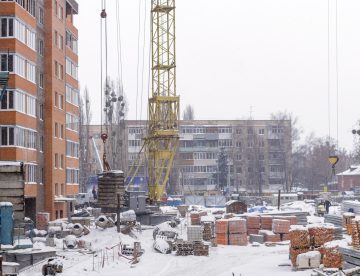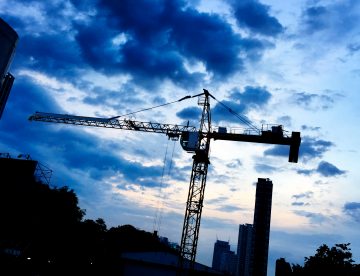
The cost of living crisis is something that’s repeatedly filling our news streams with reports of how this is affecting people, businesses and whole industries.
Now, it has been revealed that, during 2022, high levels of inflation on building materials has made its mark on the UK’s construction sector – taking the total cost of construction output for the year to a record level of £204bn.
Read on for more on this story as well as what the experts are predicting for 2023…

Having a well-functioning team is one of the most important factors which the success of any construction project relies on.
It’s how people from all kinds of backgrounds, with different skills and experience, find a way to work and cooperate with each other to reach a common goal; and how they maintain high levels of productivity, alongside excellent quality control and safety practices.
However, achieving and maintaining great teamwork does require some effort so, in today’s blog, we’ve got five tips for you.

Tools and equipment are essential to the effective running of any construction site but, because they are used so much, they can suffer a lot of wear and tear, become damaged and eventually be unusable.
However, with proper care and maintenance, the lifespan of your tools and equipment can be extended and that’s good news for four reasons: 1) Better quality tools means better quality work; 2) It reduces costs related to repairs or replacements; 3) There will be fewer accidents/ injuries from faulty equipment; and 4) It’s better for the environment.
With so much to gain, in this week’s blog, we’re sharing some top tips for how to protect and maintain those tools.

A new technology, using flying robots (drones) that work cooperatively like bees, might soon be something we see in use on a construction site.
Imitating some of the methods used by nature’s airborne builders, the technology (which has so far been tested in a lab) could ultimately be used for manufacturing and building – particularly in difficult-to-access or dangerous locations such as tall buildings or help with post-disaster relief works.
Take a look at this week’s blog to find out more…

A new England-wide employment scheme is looking to encourage more women to join the residential construction workforce and especially to go into site management roles.
Launched by the Home Builders Federation and the not-for-profit organisation, Women Into Construction, the scheme is offering women work placement opportunities on sites with access to support with childcare and training costs. The hope is that this will have the duel effect of reducing skills shortages in the industry and rebranding construction as a rewarding and practical career opportunity for people from all walks of life. Read on for more details…

Known as ‘Twelfth Night’, today officially marks the end of the festive period. For most people, this means that the lights and decorations will have been packed away, the chocolate box will be reduced to a few strawberry creams and normal working/ school days will have resumed.
While the return to a normal routine can feel like a natural comfort zone, for many people the prospect of the cold, dark winter months ahead can bring a dose of the blues and a lack of motivation that affects their personal and working lives.
If that’s you right now, here are a few tips for how you can stay motivated at work this January.

The recent cold snap is a reminder to us that working outdoors in such conditions is not exactly the most pleasant thing any of us could be doing and that, once again, it’s time for our industry to brace itself for the winter months ahead.
During these months, we all need to be aware of the potential hazards that come with harsher weather, recognise that some tasks could take longer to complete and be prepared to make adaptations when planning work activities.
If you’re working on site this winter, here’s our handy guide to surviving the cold.

There was a time when the idea of including a flat roof in a building design would have been considered risky, largely because of the kind of roofing materials used during the 1950s and 60s which proved to be not that durable and had a reputation for leaks. However, the technology has moved on so much since then and today we have flat-roofing solutions which provide exceptional waterproofing, are resistant to tear or puncture and have a much longer lifespan than their predecessors.
Perhaps the best thing about modern flat-roofing is that, providing it has been professionally installed, it should only ever require some simple routine maintenance. With the Autumn bringing leaves and debris onto our roofs, now is the time to get that maintenance done. Follow our advice in this week’s blog.

This week, the Egyptian city of Sharm el-Sheikh saw world leaders, business leaders, climate activists, civil society representatives and others arrive for COP27 – the largest annual gathering on climate action. Running for two weeks (until 18th November), this United Nations conference is seeking renewed solidarity between countries to urgently tackle the global climate emergency and deliver on the Paris Agreement for people and the planet.
Approaches that can be made by energy intensive sectors such as oil, gas, steel and cement will be discussed on the conference’s ‘Decarbonisation Day’ (11th November) so we’ll be keeping a watch on what’s said. Meanwhile, we thought we’d take this as our theme for this week’s blog and look at five ways construction companies can lower their carbon footprint.

